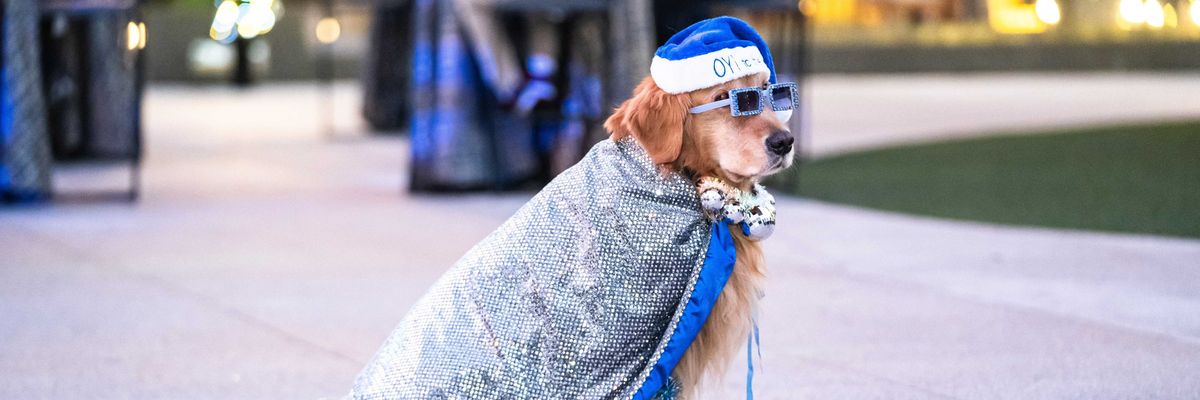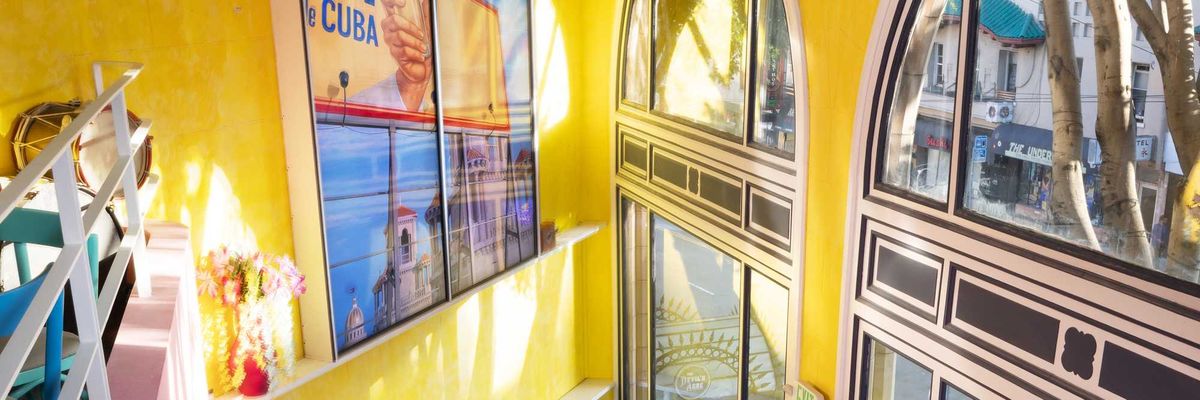To anyone under 40, a black-and-white, silent film created around the turn of century, like many shown in the Silent Film Festival (which opens tomorrow), can seem unfathomably old. This isn't necessarily a bad thing: On top of their obvious entertainment value, old films often provide a great history lesson–one that doesn't require any reading! In addition to its regular programming, this year's SFF offers another opportunity–to glimpse San Francisco's own, less distant artistic history, in the form of a performance by the legendary jazz-rock ensemble Club Foot Orchestra.
At its outset in the early 1980s, the cinematic, "atonal funk" of Clubfoot Orchestra was something very peculiar, occupying a rarified space between the work of costumed prank-rockers The Residents and the "cabaret no-wave" sound of bands like Tuxedomoon, both of whom Club Foot mastermind Richard Marriot once shared space with in a warehouse at 18 Sycamore St. If this all sounds too obscure, a more modern proponent of the sound might be Mike Patton's Travolta-baiting hard funk outfit Mr. Bungle. Clubfoot sprang from the same rowdy, nearly extinct SF warehouse culture that birthed Burning Man (which began a few years after Club Foot's first shows), specifically The Club Foot, from which Marriot took the name, a DIY punk venue that once filled a old storefront on Third Street and hosted shows by scene luminaries stretching from Blag Flag to Diamanda Galas.
Assembled from a rotating cast of West Coast all stars who've individually worked with big names like Tom Waits, The Pixies, Yo-Yo Ma, and countless jazz masters, The Club Foot Orchestra is constantly in a process of drifting apart and coming back together. Having played a pair of sold out shows earlier this year at The SF Jazz Festival, Club Foot is once again in a period of resurgence, and will be performing their score for Legong, Dance of the Virgins, this Saturday alongside Gamelan Sekar Jaya, a San Francisco-based gamelan ensemble often cited as the best outside of Indonesia. We spoke to Richard about the group, silent films, and San Francisco's bygone era–here are some of the highlights:
How did you get involved with Legong and Gamelan Sekar Jaya?
They commissioned me to do the score in 1989. I'd had dinners with them, and they'd come to my shows. So in 1999 we developed this score, we watched the movie over and over again and noticed that, OK, here's an authentic ritual–a ritual meaning that there's a narrative to it, and a dance connected to it. That means that there's music connected to it. So we said here's this Lion Dance so we'll play the Lion Dance. Here's another piece, an adolescent dance, so we'll put the original dance music there.
You're also on the DVD for Legong, Dance of the Virgins, right?
We have our score on Legong. So sometimes when you see that on Turner Classics, you hear our score, and other times you hear the orchestral score that they did in the 1930s. It's one of these things where a Hollywood composer has clarinets playing when the gamelan is playing. Like 'doot doot doot doot doot.' Classic Orientalism–it's an acquired taste I must say. And the 'primitive natives' are all topless! It's the stuff that Tiki bars are made of.
Do you 'jam' out most of the Club Foot scores or are they written in advance?
Most of the Club Foot orchestras is written out. Watching the movie again, feeling the moods, watching the tempos, writing out the music. Of course in this day and age, we have digital sequencers and we get to really measure out how many measures of tempo we need for this particular scene. And there's improvisation where appropriate. There's certainly ways of getting certain effects with improvisation that you could never get [in other ways]. Certainly you also want to give the players in the group, who are almost all equally good at classical music and jazz, an opportunity to improvise. So we give them the opportunity to do that–I love being able to do that, it heightens the experience and the audience can feel it.
What players can we expect to see in Club Foot on Saturday?
We have Alissa Rose on violin, a magnificent violinist who's going to be on the Legong, Dance of the Virgins score. Chris Grady, who played trumpet with us all through the 90s, he'll be playing trumpet for Legong; Sarah Wilner, who also plays the gamelan, she was on the original Legong from 1999. She's an expert at the tuning difficulties that the gamelan presents.
I can imagine it's different–it's an eastern instrument. Can you explain the difference between the eastern and western aspects of the music?
The way the Balinese hear these scales [of the gamelan] … [is] totally different than us Westerners. When we perform with there's one place where Subandi, my collaborator and leader of the gamelan, will improvise his singing in basically a B-flat tonic. But we performed this piece in 2005 in New York, and we had a different Balinese master with us, who is probably the pre-eminent Balinese composer, and he sang it in a totally different scale.
So, there are tons of challenges in tuning instruments. In some ways this is why I went with the string quartet–they have some advantage in tuning. Not only can they tune, but it's a sustained tone against all that percussion. That and the saxophone and clarinet, because I love saxophone and clarinet.
I'd first heard about Club Foot in the context of the Residents, and the SF art-rock scene. What do you think about how different the city is today–is that world gone forever?
Well it's a different world, just as New York is different from San Francisco. I lived in NY in the early 1980s for a while, then I went back and I lived in New York from 2004 to 2011. It's the same thing, it's a very similar world. San Francisco certainly has a lot more money now. I think it's harder to live a bohemian lifestyle–the lifestyle that fed the culture of the Residents and Tuxedo Moon, and Snakefinger, and the punk scene of San Francisco including The Club Foot, where we originally started. That world is getting harder and harder to maintain, but thankfully there is rent control in San Francisco still, so a little of that hangs on, as it does it the East Village.
When I was living with Snakefinger in the 80s, there were seven or eight of us living in a place that cost 11 or 1200 a month. A big, big warehouse at 18 Sycamore, which was the old residence of The Residents, in fact. When the Residents moved out, Tuxedo moved in, and when Tuxedo moved out it was Snakefinger's. At the time it was just something you fell into.
https://youtu.be/BRap6wf-irU
An excerpt from a Clubfoot performance of Legong.
Legong: Dance of the Virgins plays Saturday at 2:15 pm at The Castro Theatre, tickets are available on the website of The Silent Film Festival.





















